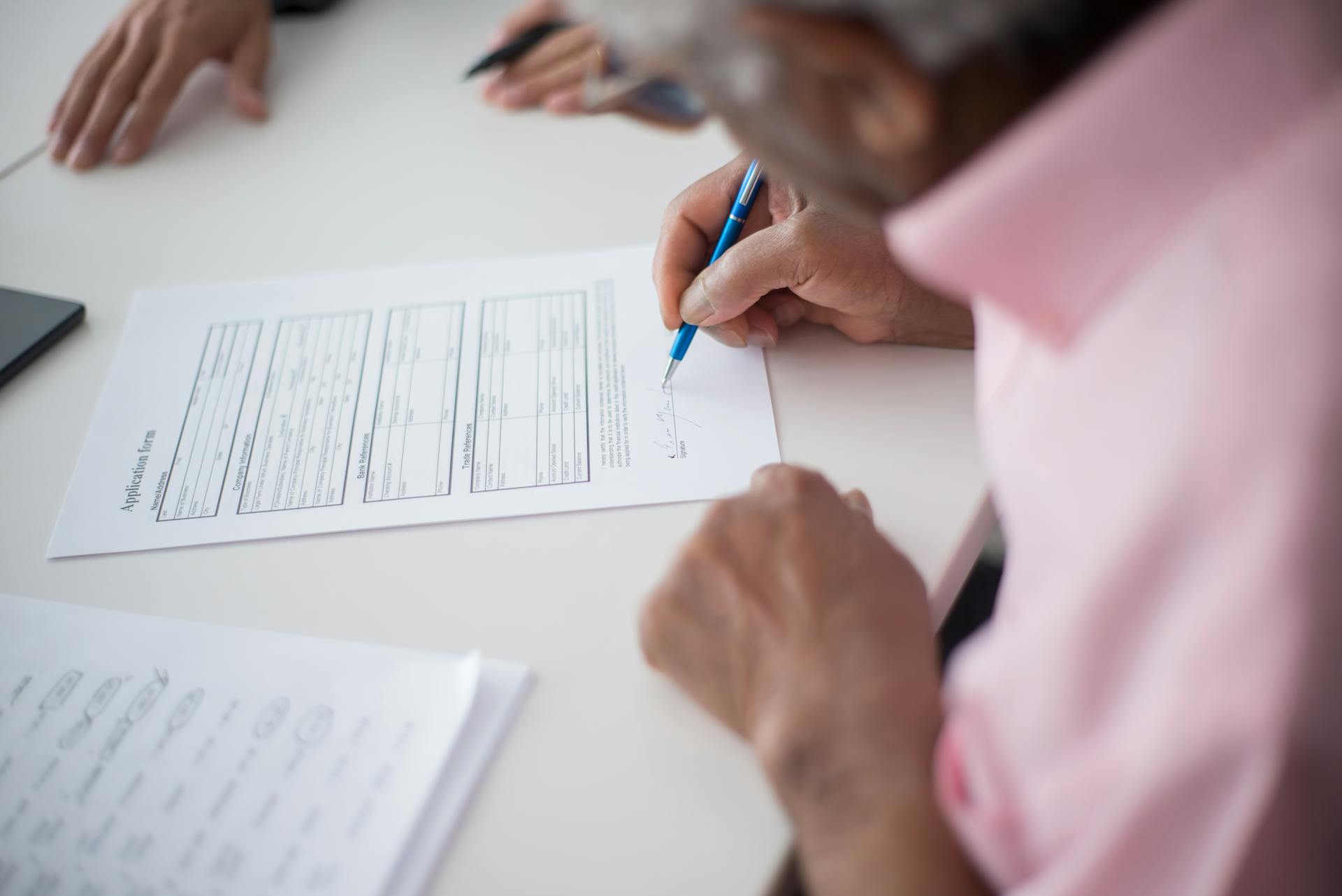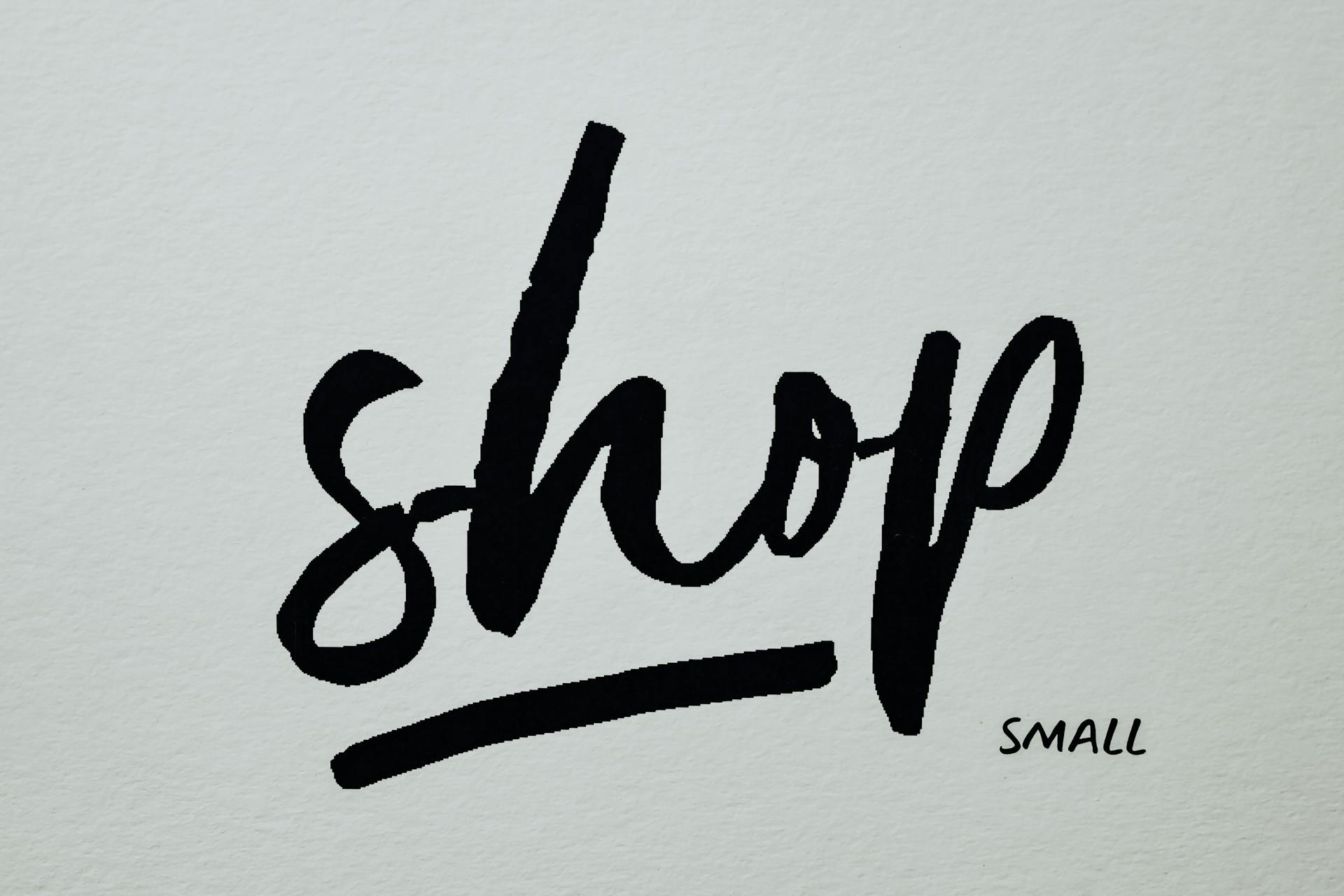
A microloan is a small loan, typically ranging from $500 to $50,000, designed to help individuals or small businesses meet their financial needs.
Microloans are often used to cover unexpected expenses or to take advantage of a business opportunity that requires a small amount of capital.
These loans are usually offered by non-traditional lenders, such as community development financial institutions (CDFI) and online lenders, which have more flexible underwriting standards than traditional banks.
CDFI's, for example, provide microloans to low-income individuals and small businesses that may not qualify for traditional loans.
For more insights, see: Microloans for Women
What is a Microloan
A microloan is a small loan, usually $50,000 or less, issued to a business that might be having difficulty getting approved through other loan programs.
Repayment terms tend to max out at seven years, with interest rates ranging between 8% and 15%. Microloans are geared toward entrepreneurs who can’t qualify for traditional financing, such as startup founders and people with limited credit histories.
These small-business loans are incredibly popular, and they're a good option for businesses owned by women, minorities, and veterans, as well as those in low-income and underserved communities.
For your interest: Money Lender Business Loan
Benefits and Drawbacks
A microloan is a type of financing that can be a game-changer for small businesses, but like any financial decision, it's essential to consider the benefits and drawbacks.
Easier qualification is one of the advantages of microloans. Typically, lenders have more lenient eligibility requirements, making it easier for small businesses to qualify.
Flexibility is another benefit of microloans. Funds can be used for a wide variety of needs, from repairs to equipment purchases.
Quick financing is also a major advantage of microloans. If you meet the requirements of the lender, funds are often dispersed quickly, usually within a few days.
However, microloans also have some drawbacks. Short repayment terms can be a challenge for some businesses, and potentially higher interest rates may be a concern.
In some cases, collateral or a personal guarantee may be required, which can be a risk for business owners.
It's also worth noting that microloans may not be the best choice for businesses that need a lot of funding to grow.
Expand your knowledge: How to Get a Small Business Loan without Collateral
Qualification and Eligibility
To qualify for a microloan, you'll need to meet the lender's specific requirements, which can vary depending on the institution and the loan program. Generally, microlenders have flexible business loan requirements, and some may not even require a minimum credit score or annual revenue.
Credit scores play a role in determining eligibility, with a minimum score of 620 often required by lenders. However, some microlenders may accept lower credit scores, such as Upstart, which accepts credit scores as low as 300.
Personal credit scores, annual revenue, time in business, and past or current debt obligations are all factors that lenders consider when evaluating your application. You may also be required to provide collateral, such as business assets or a personal guarantee, to secure the loan.
To get a microloan, you'll typically need to provide documentation of your business's financial information, including business plans, bank statements, and credit reports. You'll also need to demonstrate a clear plan for how you intend to use the loan proceeds and how you'll repay the loan.
Expand your knowledge: Instant Cash Advance No Direct Deposit
Here's a breakdown of the general qualification requirements for microlenders:
Some microlenders may have additional requirements, such as a minimum time in business or annual revenue, but these can vary depending on the lender and the loan program. By understanding the specific requirements of the lender and the loan program, you can increase your chances of qualifying for a microloan.
Discover more: Sba Microloan Credit Requirements
Loan Options and Providers
A microloan is a small loan, usually under $50,000, taken out by a business. They're typically targeted toward startups, low-income borrowers or those with little or damaged credit. It's also a popular option for entrepreneurs from underrepresented communities, as well as anyone unable to qualify for conventional business loans.
Microloans are available from SBA intermediaries, the U.S. Department of Agriculture, nonprofit and community organizations as well as peer-to-peer lenders. Microlenders usually have flexible eligibility requirements and are often willing to work with startups (even those with no revenue yet) and businesses with bad credit.
On a similar theme: No Doc Business Lines of Credit
The best option for you will typically be wherever you can qualify with the most competitive rates and terms. Availability: Nationwide.
Here are some popular microlenders to consider:
- SBA Microloan with Fundera by NerdWallet: Microloan size: Up to $50,000. Interest rates: Vary. Typically 8% to 13%.
- Kiva: Best for interest-free loan. 0% interest during the entire loan term.
- United Prosperity (now defunct): Uses a variation on the usual microlending model; with United Prosperity the micro-lender provides a guarantee to a local bank which then lends back double that amount to the micro-entrepreneur.
The SBA microloan program is funded by the SBA and administered through a network of community lenders, also called intermediaries. These microlenders offer loans to small businesses that may not qualify for other types of SBA loans.
Suggestion: Small Business Administration Microloan
Loan Process and Requirements
Qualifying for a microloan is a relatively straightforward process, but it's essential to understand the requirements. Typically, microlenders will consider factors such as personal credit score, annual revenue, time in business, past or current debt obligations, and previous bankruptcies.
The good news is that microlenders often have more lenient qualification standards compared to traditional loans. A minimum credit score of 620 is usually required, but some lenders may not have a minimum credit score requirement. You'll also need to provide documentation of your business's financial information, including cash flow, outstanding debts, and plans for your business.
To get a microloan, you'll need to provide a business plan that showcases your proposal and demonstrates how you'll use the funds. You may also be required to provide collateral or a personal guarantee. The application process typically takes anywhere from 30 to 90 days, and lenders may contact you during this time to discuss your options or ask for additional information.
Here's a breakdown of the general qualifications of a microlending:
When applying for a microloan, it's essential to research lenders in your geographical region and understand their eligibility criteria. You'll need to gather various documents, including LLC documentation, your IRS Employer Identification Number (EIN), business licenses, bank statements, details of employees, annual revenue, and your credit report.
Alternatives
If you're not sure if a microloan is right for your business, there are many alternatives to explore. You can consider different offerings from microlenders, which may include SBA 7(a) loans, business term loans, and business lines of credit.
Some microlenders, like LiftFund, offer loan programs that provide financing up to $500,000 for historically underserved businesses looking to buy commercial real estate. This can be a great option if you need more funding than a traditional microloan.
Online lending is also an option if you're not eligible for a microloan. Some online lenders work with newer businesses or those with less-than-perfect credit histories, and you can compare factors like interest rates and funding times to find the right fit for your needs.
If you're seeking capital but aren't sure where to start, consider connecting with a lender in your community, like a CDFI, to explore your financing options.
Here are some alternatives to microlending:
- Business line of credit: Access revolving funds to help pay for business purchases.
- Working capital loan: Get a loan for payroll, inventory, rent, and other day-to-day expenses.
- Equipment financing: Purchase or upgrade equipment, like computers or restaurant appliances, with a loan that doesn't require a lengthy business history or down payments.
- Term loan: Receive a lump sum of cash and make scheduled payments with accruing interest.
- Commercial real estate loan: Get a loan to purchase real estate and expand your business.
- SBA 7(a) loan: Get up to $5,000,000 with affordable rates and terms up to 25 years.
History and Impact
Microloans have a rich history that spans centuries. Jonathan Swift's idea of microcredit inspired the Irish Loan Funds of the 18th and 19th centuries.
John Wesley, a pioneer in microcredit, started a lending scheme in 1746, which helped 255 people in 18 months. His approach was to lend small amounts of money, typically £20, which was repaid weekly within three months.
The concept of microcredit continued to evolve, with Individualist anarchist Lysander Spooner writing about its benefits in the mid-19th century. Around the same time, Friedrich Wilhelm Raiffeisen founded the first cooperative lending banks to support farmers in rural Germany.
The impact of microcredit is a subject of controversy, with some arguing it reduces poverty and empowers women, while others claim it can drive households into debt traps. The available evidence suggests that microcredit has facilitated business creation and growth, but may not necessarily increase incomes after interest payments.
Some studies have shown that microcredit has not generally empowered women, and its negative impacts have not been as drastic as some critics have argued. However, it's essential to note that microcredit is just one factor influencing the success of a small business.
Broaden your view: Payday Loans Not Lenders
History
Jonathan Swift's idea of microcredit-inspired Irish Loan Funds in the 18th and 19th centuries. John Wesley started a microcredit scheme in 1746, lending only twenty shillings at once, which was repaid weekly within three months.
His journal from 1748 records that thirty pounds sixteen shillings were collected, and out of this, two hundred and fifty-five persons were relieved in eighteen months.
Lysander Spooner, an Individualist anarchist, wrote about the benefits of numerous small loans for entrepreneurial activities to alleviate poverty.
Economic Principles
The economic principles behind microcredit organizations have undergone significant changes over the years. Initially, many microlenders began as non-profit organizations operating with government funds or private subsidies.
In the 1980s, the financial systems approach, influenced by neoliberalism, became the dominant ideology among microcredit organizations. This shift led to the commercialization of microcredit, with the formation of Unit Desa in 1984.
Unit Desa offered microloans based on market interest rates, marking the official beginning of the commercialization of microcredit. The institutionist model promoted market solutions to address social problems.
The Grameen Bank model, a non-profit bank, was criticized by Muhammad Yunus for its shift towards for-profit institutions. Yunus argued that credit programs seeking to profit from the suffering of the poor should not be described as "microcredit."
Many microcredit organizations now function as independent banks, charging higher interest rates on loans and placing more emphasis on savings programs. Unit Desa, for example, has charged in excess of 20 percent on small business loans.
Despite the controversy, the numbers indicate that ethical microlending and investor profit can go hand-in-hand. A rural finance minister in Indonesia showed how Unit Desa could lower its rates by about 8% while still bringing attractive returns to investors.
You might like: Can I Get Loan without Bank Account
Impact of

The impact of microcredit is a complex and multifaceted issue. Proponents of microcredit argue that it reduces poverty through higher employment and higher incomes, which can lead to improved nutrition and education for borrowers' children.
The evidence suggests that microcredit has indeed facilitated the creation and growth of businesses, generating self-employment in many cases. However, it's also led to debt traps in some instances.
Some critics argue that microcredit may not increase incomes after interest payments, and that the money from loans may be used for consumption rather than productive investments. This can perpetuate a cycle of debt and poverty.
The available data indicates that microcredit has had varying effects on women's empowerment, with some studies suggesting it has not generally empowered women. On the other hand, it's also been argued that microcredit helps recipients graduate from welfare programs in the US, UK, and Canada.
Informal intermediation is another unintended consequence of microfinance, where entrepreneurial borrowers become informal intermediaries between microfinance initiatives and poorer micro-entrepreneurs. This can range from benign to professional and even criminal intermediation.
Here are some key statistics on the impact of microcredit:
Examples and Case Studies
Microloans have been used to great effect in various settings. For example, in rural Africa, microloans have helped women start small businesses, such as selling vegetables or handicrafts.
In the United States, microloans have been used to help small businesses recover from natural disasters, such as hurricanes or wildfires. This was the case with a small bakery in Florida that received a microloan to replace equipment damaged in a hurricane.
Microloans can be used to finance a wide range of activities, from buying inventory to paying rent.
Discover more: Micro Personal Loans
Bangladesh
Bangladesh has a long history with Grameen Bank, which is the oldest and probably best-known microfinance institution in the world. Grameen Bank launched their US operations in New York in April 2008.
Grameen Bank in Bangladesh has a remarkable repayment rate, with one research study showing that poorer individuals are safer borrowers because they place more value on the relationship with the bank. This is a key aspect of their successful model.
The Grameen model has been replicated in various countries, but with mixed results. For example, the Calmeadow Foundation tested an analogous peer-lending model in Canada during the 1990s and found it to be unviable without subsidies.
Interestingly, the Grameen model has been successful in countries such as Israel, Russia, and Ukraine, where micro-loans have helped small business entrepreneurs overcome cultural barriers in the mainstream business society. The Israel Free Loan Association (IFLA) has lent more than $100 million in the past two decades to Israeli citizens of all backgrounds.
Here's a brief overview of the Grameen model's success in different countries:
Comilla Model
The Comilla Model was a community-based initiative that distributed credit in East Pakistan in the 1950s.
Akhtar Hameed Khan was the driving force behind this project.
He used a group-oriented approach, which aimed to empower communities to manage their own credit systems.
This approach involved distributing credit through community-based initiatives, rather than relying on traditional banking methods.
The Comilla Model was implemented, but it ultimately failed due to over-involvement from the Pakistani government.
The project also suffered from internal hierarchies, where some community members began to exert more control over loans than others.
For another approach, see: Accounts Receivable Financing Is Based on
Examples

The examples we'll be looking at are from real-world scenarios, not hypothetical situations. These examples demonstrate the practical application of the concepts we've discussed.
A company called Zappos, an online shoe retailer, implemented a customer-centric approach to customer service. They achieved a customer satisfaction rating of 80%.
Their focus on customer satisfaction led to increased customer loyalty and retention. This, in turn, resulted in significant revenue growth for the company.
Another example is the use of data analytics by a healthcare organization to improve patient outcomes. By analyzing patient data, they were able to identify high-risk patients and provide targeted interventions.
This approach resulted in a 25% reduction in hospital readmissions within 30 days. It also led to improved patient satisfaction and reduced healthcare costs.
These examples illustrate the potential for data-driven decision making to drive positive change in various industries.
For your interest: Microloan Examples
India
In India, the National Bank for Agriculture and Rural Development (NABARD) finances over 500 banks that lend to self-help groups (SHGs).
These SHGs are made up of 20 or fewer members, the majority of whom are women from the poorest castes and tribes.
Members save small amounts of money, as little as a few rupees a month, in a group fund.
They can borrow from the group fund for various purposes, such as household emergencies or school fees.
As SHGs prove capable of managing their funds well, they may borrow from a local bank to invest in small business or farm activities.
Banks typically lend up to four rupees for every rupee in the group fund.
In Asia, borrowers generally pay interest rates ranging from 30% to 70% without commission and fees.
The Indian SHG-Bank Linkage model is the largest microfinance program in the world, with nearly 1.4 million SHGs and approximately 20 million women borrowing from banks.
Similar programs are evolving in Africa and Southeast Asia with the assistance of organizations like IFAD and Opportunity International.
Additional reading: Fund Finance Loans
Specific Lenders and Programs
The SBA microloan program is funded by the SBA and administered through a network of community lenders, also called intermediaries. These microlenders offer loans to small businesses that may not qualify for other types of SBA loans.
Accion Opportunity Fund is a nonprofit lender offering up to $250,000 for a range of diverse business owners, including minority entrepreneurs, veterans, and women-owned businesses. LiftFund is a nonprofit organization offering business loans up to $500,000, which exceeds the typical microloan limit.
Grameen America offers microloans to women entrepreneurs, with first-time loans available from $500 to $2,000 and must be repaid on a six-month term. Justine Petersen offers several types of microloan programs for small businesses, including SBA microloans and microloans through a partnership with a local CDFI.
Farm Service Agency
The Farm Service Agency (FSA) is a great resource for farmers looking for financial assistance. As part of the U.S. Department of Agriculture, the FSA offers two types of farm loans through its microloan program.
These loans are designed to help smaller farms access capital, including nontraditional operators like farm trucks and community supported agriculture (CSA) farms. The maximum repayment term for a direct farm ownership microloan is 25 years.
Farmers can apply for two types of microloans: direct farm ownership and direct farm operating. The direct farm operating microloan is used to buy farm equipment, tools, and livestock, or cover other essential expenses.
The interest rates for these loans are based on the Farm Service Agency direct operating/direct ownership loan interest rate at the time of loan approval or loan closing. As of September 2023, the rate is 5.125% for operating loans and 5% for ownership loans.
To qualify for these microloans, you must meet the guidelines outlined by the FSA. You can contact your local FSA office for more information and assistance with the application process.
If this caught your attention, see: Private Equity Home Ownership
Loans for Women
Grameen America offers microloans to women entrepreneurs, with loan sizes ranging from $500 to $2,000 for first-time loans. These loans must be repaid on a six-month term.
Grameen America's program is designed to help women build their businesses, credit, and create jobs in their communities. The lender doesn't require a minimum credit score, business income, or collateral to qualify for funding.
To qualify, you'll need to form a group with four other women you trust, and then your group participates in financial training. After the training, each member receives a microloan to build their small business.
Accion Opportunity Fund also lends to minority entrepreneurs, including women, with loan sizes ranging from $5,000 to $250,000. They offer flexible repayment terms and business coaching to help entrepreneurs develop their skills.
The Accion Opportunity Fund is a nonprofit lender that provides funding to women-owned businesses, as well as other diverse business owners. They have a minimum credit score requirement of 600, but may look beyond a bad credit score if your business has been operating for several years with a solid cash flow.
Here are some key facts about loans for women:
- Grameen America offers microloans to women entrepreneurs with loan sizes ranging from $500 to $2,000.
- Accion Opportunity Fund lends to minority entrepreneurs, including women, with loan sizes ranging from $5,000 to $250,000.
- Both lenders offer flexible repayment terms and business coaching to help entrepreneurs develop their skills.
- Grameen America doesn't require a minimum credit score, business income, or collateral to qualify for funding.
Frequently Asked Questions
Are micro loans a good idea?
Microloans can be a good idea for diversifying your income, offering potentially higher returns than traditional fixed-income investments. However, they come with a higher risk level, making it essential to carefully evaluate the borrower's creditworthiness.
Featured Images: pexels.com

